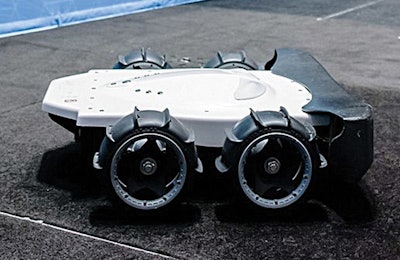
Farmers cannot walk the house all day, but a robot can.
As part of the 2019 Poultry Tech Summit, Yanne Courcoux, the co-founder and chief executive officer of French agritech startup Tibot Technologies, presented her company’s Spoutnic robots. Courcoux, who spoke on November 21, 2019, at the event held in Atlanta, Georgia, said the devices are designed to work in broiler, turkey, breeder and layer houses.

Yanne Courcoux, Tibot Technologies (Paul Ward Photography)
Labor shortage solution
According to the Organization for Economic Co-operation and Development (OECD), the world’s demand for poultry meat is expected to rise by more than 45% by 2030. At the same time, farmers around the world are dealing with challenging labor markets with fewer available workers demanding higher pay.
Robotic farming assistants offer one way for poultry growers to reduce their labor costs and get better performance for their birds. Tibot is now marketing its Spoutnic robots, a device reminiscent of a robot vacuum cleaner which moves along the floor of a poultry house on four wheels, to serve as what it calls a restless assistant.
Courcoux said the device was originally developed by a breeder farmer looking to keep his hens from laying floor eggs – a major resource drain – but it's since advanced for a variety of applications. The device’s main functions are keeping the flock moving around the house, maintaining litter quality and serving as a constant, reliable assistant for the farmer. It can also be outfitted with modular attachments for specialized functions.
Better results
Beyond saving the farmer time and reducing labor costs, the Spoutnic’s presence in a house also leads to a better feed conversion ratio, she said. Field trials conducted in 2018 by Tibot comparing otherwise identical operations showed the house outfitted with the Spoutnic had better average daily gain and a better feed conversion ratio than the control house.
Courcoux said the better performance comes from the robot moving the birds about the house and constantly stimulating activity.
“If you stay all day sitting on the couch, you aren’t going to be healthy,” Courcoux said. “After the robot has moved the birds, the first they do is they get up, they eat and they drink.”

















